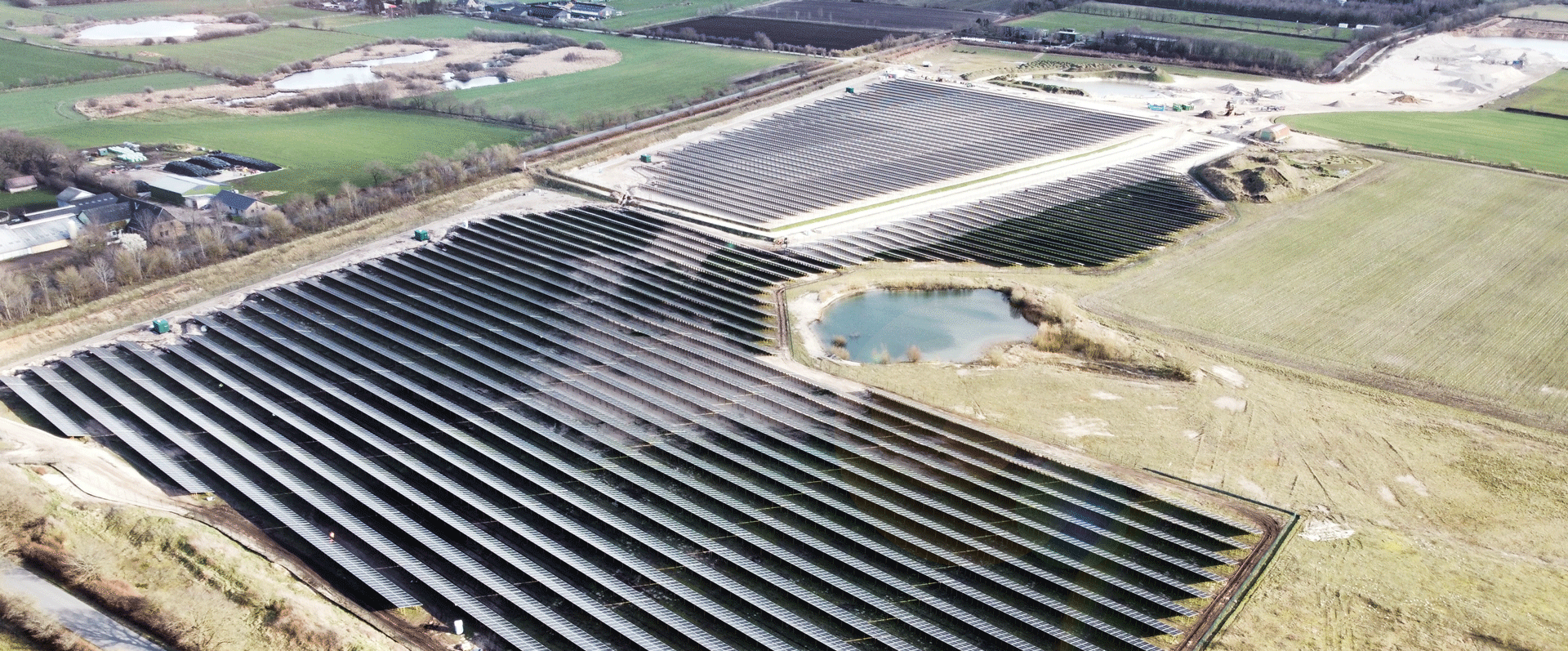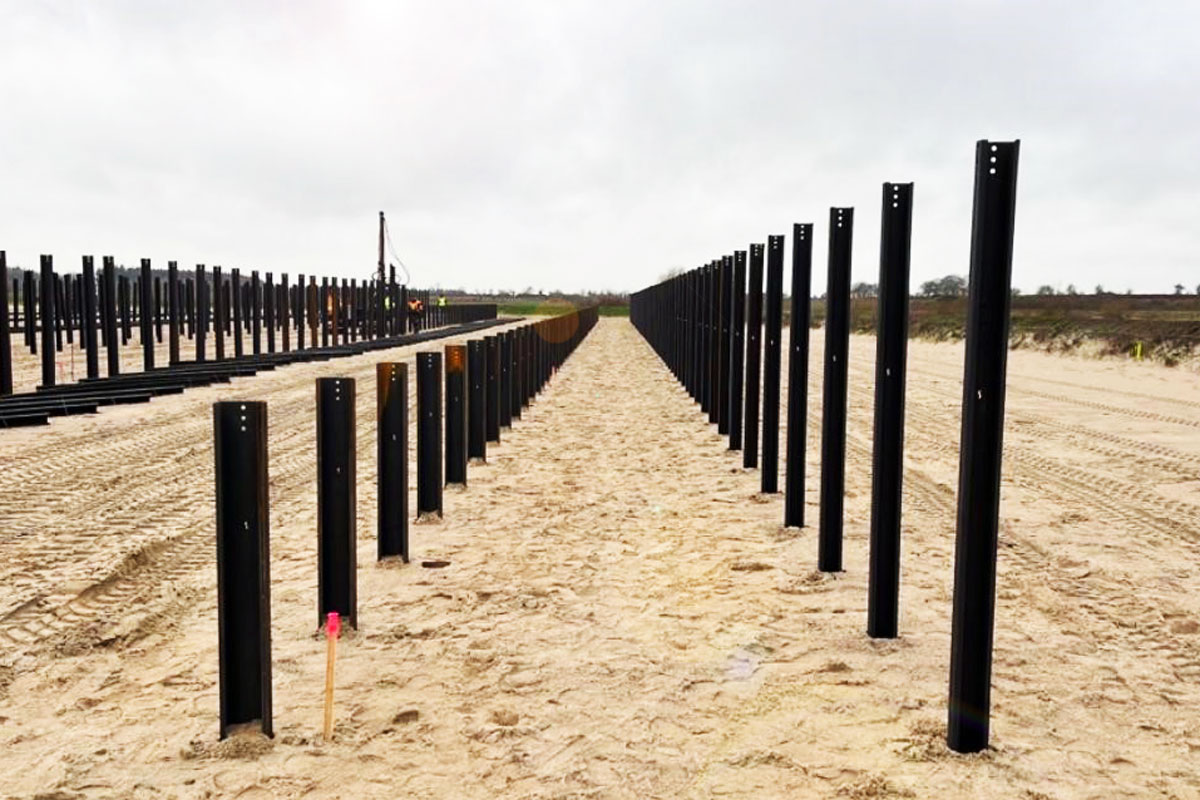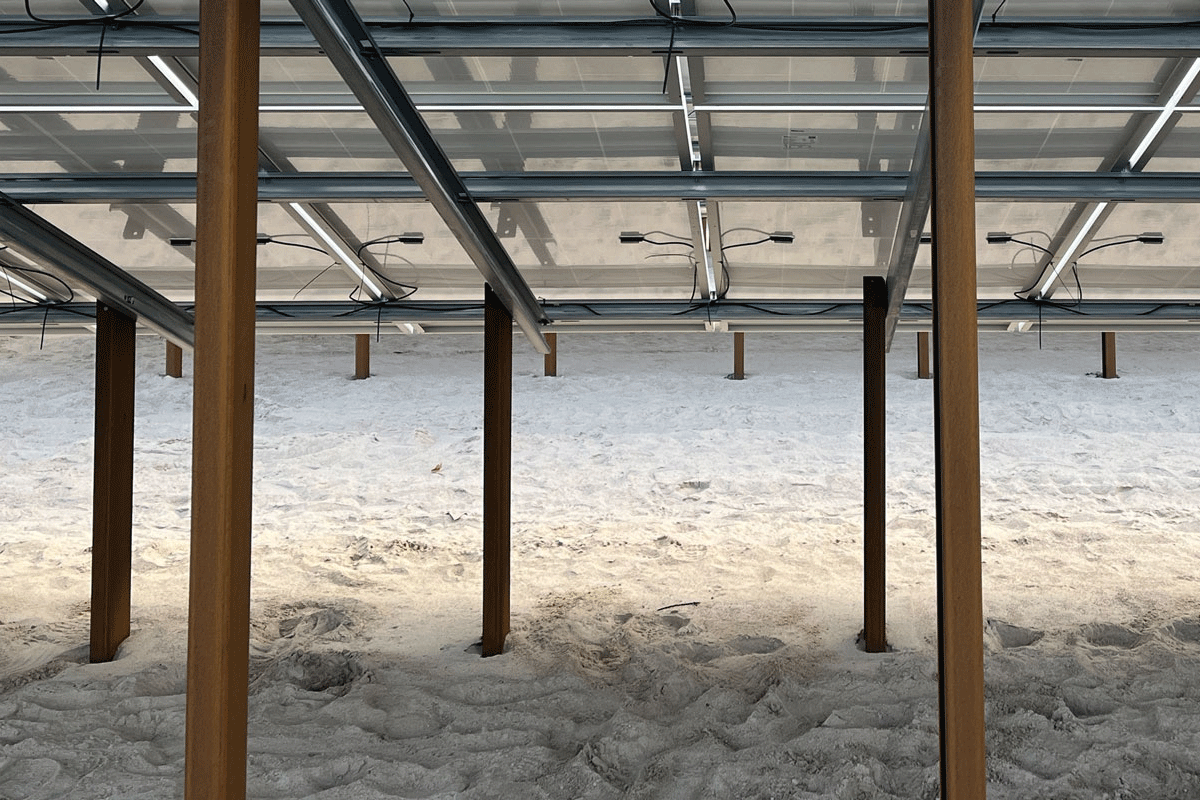
PV in water protection areas
Requirements for solar parks in water protection areas
The energy transition has gained momentum with the amendment of the German Renewable Energy Sources Act (EEG). Generating energy from the power of the sun is now in the overriding public interest, which has also made setting up ground-mounted photovoltaic systems in water protection areas much easier. But system operators must only use certain materials and coatings to ensure that the areas’ sensitive ecological functions remain undisturbed, keeping any impact on soil and water to a minimum. The protection of bodies of water is indispensable for the health of our population and preserving the natural basis of life.
Significant environmental regulations for water protection areas
Ground-mounted systems helping with water protection
Requirement: Avoiding water pollutants
Special substructure for ground-mounted systems in comparison
Significant environmental regulations for water protection areas
Local authorities decide whether a solar park can be approved in a water protection area and which regulations have to be adhered to in each individual case. Figuring out in which protected zone construction should take place is the decisive factor.
Ground-mounted solar installations are generally excluded from Zone I of a water protection area, the catchment area. However, they can be constructed in the narrower protection zone (Zone II) and wider protection zone (Zone III). This logic also applies to areas that are not defined as water protection zones but feature a high groundwater level. Regardless, having a solar park in these areas must not deteriorate the quality of water protection.
These careful considerations are why local authorities determine which components of the solar power plant are installed where only on a case-by-case basis. Furthermore, specifications can vary depending on the federal state and the region, so operators should always contact the local environmental authorities to find out more about all applicable regulations.
The guidelines of the Bavarian State Office for the Environment (LfU) can serve as an example: They provide a general scope of the conditions under which ground-mounted systems are compatible with water protection, taking into account requirements for the protection of bodies of water, the protection of ecosystems and the preservation of soil structure and ground vegetation.
Iqony Sens has already found and erected a number of special solutions for projects with such requirements, including ground-mounted PV systems in a Zone II Water Protection Area as well as in areas with high groundwater levels.
Ground-mounted systems helping with water protection
Ground-mounted systems can also have a positive impact on water protection areas. For example, if land was previously used for agricultural purposes, including the use of fertilisers and pesticides (e.g. regulated by fertiliser ordinances and state ordinances in Germany), building a solar park there (replacing extensive land use) can significantly reduce the nitrate input into the groundwater.
“It’s a win-win situation”, comments Daniel Raab, Team Lead for Sales Utility Scale at Iqony Sens. “The photovoltaic system protects the groundwater in that there’s no more need for fertiliser. At the same time, the system generates clean energy, further protecting the climate”. For this double benefit to occur, however, a ground-mounted system must be carefully built in such a way that it does not harm the environment. This requires considerable planning and close cooperation with local environmental authorities.
Avoiding water pollutants
An essential aspect of water protection concerns the handling of substances hazardous to water, including detergents and cleaning agents, pesticides, fertilisers, paints, solvents and mineral oil products such as heating oil, diesel or petrol. These substances can contaminate rivers, lakes and groundwater. Using them is therefore strictly regulated by the ordinances and provisions in the German Federal Water Act (WHG).
This means that only water without any chemical additives may be used for cleaning the solar modules for the operation of a ground-mounted PV system in a water protection area. When constructing the system, only demonstrably uncontaminated soil material is permitted for soil fills; no recycled building materials are allowed. The operator must also ensure at all times that fuels, operating fluids or other substances hazardous to water do not enter the soil. This applies both to the construction phase and the subsequent maintenance work.
There are also strict specifications regarding transformer stations, which are filled with water-polluting oils as an insulating and cooling medium. If the stations suffer any damage, no liquid can escape into the environment. That the operator can provide evidence of these specifications must be considered in advance of the planning and coordinated accordingly with the authorities and manufacturers. The result is that transformer stations are generally prohibited in Zone II and only permitted in Zone III with special safety equipment.
Practically, this means that only dry-type transformers or ester-filled transformers in an oil pan are used for ground-mounted photovoltaic systems in water protection areas, as they do not contain any water-polluting oils and are also less risky in terms of a fire hazard.
Special substructure for ground-mounted systems
Not every substructure is suitable for photovoltaic systems in water protection areas.
Since the groundwater is naturally protected from contamination by surface layers, particular care must be taken to ensure that the surface is damaged as little as possible when installing a PV system. At the same time, however, the module tables must be securely anchored in the often damp or soft surface areas, which presents a significant challenge for construction.
“It’s possible to have foundation variants in water protection areas”, explains John Fries from Meiser Solar, an expert in PV substructures and a long-term partner of Iqony Sens. “Which solution is best depends on the specific requirements of the project and the local regulations, meaning consultations with an expert are essential”.
1 – Strip foundations
One option is shallow, non-frost strip foundations. This foundation variant does not dig deep into the soil, meaning the surface layers are least at risk. This is because the system itself is not being anchored into the ground. Instead, the module tables are fixed to the ground by concrete blocks, sealing a comparatively large area. The sealing, the significant material requirement for concrete and the associated costs all make for a decisive disadvantage with this foundation variant.
2 – Special constructions
Alternatively, special constructions can be used. The substructure can also be planned with a higher number of posts to reduce the embedding depth yet still ensure stability. However, the increased material requirements of this variant come with higher costs.
3 – Coatings
As a third variant, different coatings can be selected for the PV substructure, with not coating the posts at all also being a possibility. The advantage of non-galvanised posts: No possibility of zinc wearing off and entering the groundwater. Furthermore, the material thickness is calculated in such a way that stability can be guaranteed over the operating life of the system despite material removal of the steel, making these posts ideal for ground-mounted PV systems in areas with a high groundwater level, where galvanised steel profiles are often prohibited.
Iqony Sens is currently using this water-protective solution in a joint project with Meiser Solar. A 13.5 MWp high-performance PV park is being built with a non-galvanised substructure in northern Germany. The following pictures show how it actually looks.

Substructure directly after pile driving the black, non-galvanised posts

Non-galvanised posts completely corroded four weeks after pile driving
Your expert for PV systems in protection areas
As you can see, certain particularities apply to water protection areas, the most important of which are listed above. Other criteria may also be important to consider, depending on the situation. Individual counselling is therefore indispensable for such projects, but the experts at Iqony Sens are happy to help at any time! We are very familiar with PV projects in water protection areas and will gladly take over the planning for you within the scope of official requirements, including the subsequent implementation of the photovoltaic system. Our expertise allows us to reconcile maximum efficiency and longevity with the requirements of nature conservation and environmental protection.
Pictures: Iqony Sens (header, corroded posts) / WWS Power (non-galvanised posts)
Published: 06.06.2023
Lease your property!
We advise owners individually on letting and leasing land for photovoltaic projects.
